Before I bid farewell to summer I am crawling back onto my blogging wagon (oh it is easy to slip off the back side of that wagon!) to recount how this summer unfolded its beautiful self for me.
I first visited Newfoundland in 2014 and vowed to return every year . So far I’ve been doing pretty well keeping that vow.

I knew I wanted to find a way to spend more significant time in Newfoundland beyond what the usual scope of a tourist trip affords so I started digging into the possibility of an artist residency. I stumbled upon the Kickstarter video for the Two Rooms Residency on the Bonavista Penninsula the year after their campaign successfully wrapped up and they were beginning their first season. I checked in periodically on Two Rooms via FB and started formulating a Newfoundland project that I hoped to propose for my own residency there. This past fall I sent my application in, held my breath through the winter and Hurray, Hurrah! I got an email from Director Catherine Beaudette inviting me to be an Artist in Residence at Two Rooms!

Each time I have visited I have been struck by Newfoundlanders’ sardonic take on the world, a very particular blend of pragmatism, irony, and humor. They have had a long history of bearing up under the crushing weight of their circumstances. This residency would afford me the opportunity to plumb the questions closest to my heart. How do we proceed in this confusing mess of our beautiful world? How do we as global citizens face adversarial shifts without communities losing cultural integrity and individuals losing their souls?
At Two Rooms I began a new body of work which I refer to as “Float”. It’s an ongoing project with twists and turns. I aim to reflect the coupled traits of fragility and resilience that I feel so strongly in Newfoundland.
But, oh! A trip to Newfoundland is not all seriousness. So I hummed my way through the spring in anticipation of the fun to be had. I threw myself into readying my vegetable garden for my June absence. Newfoundland icebergs here I come!
Here’s what awaited us (I shared my residency with fellow Quirk traveler, Hannah Verlin, who had the good sense, unlike me, to pack Long Johns) on the Bonavista Penninsula:


We wound our way up the west coast of the Bonavista Peninsula to the village of Duntara and soon spotted the lovely tri-colored heritage home I recognized from the two Rooms Facebook page.

Locked with a padlock! Hmmm, time to dig out the printed out directions. Ah! this was the Two Rooms gallery. We needed to head over to Bog Lane, and there we’d find the mustard colored house with the names of the Kickstarter backers calligraphied on the side–our home for the next two weeks.

Even more exciting for me was the perfect red fisherman’s shed across the street that would serve as my studio.



Over the next fourteen days I assembled and draped this sometimes cozy, sometimes drafty space with a segmented map that stretched from the North Pole to Boston.
And then I started to play around with the map which you will see in subsequent posts.
When the weather was good we set aside half the day for exploring. If you are a regular follower of this blog you know that besides seeking out natural beauty (there is no shortage of that is Newfoundland!) I am always on the look out for offbeat surprises. Turns out our closest neighboring communities were all we needed for deep satisfaction in both departments. Choosing our first day’s destination solely on its appealing name we headed out to Tickle Cove vowing to take in the sites of Open Hall and Red Cliff on our way back. We parked our car beside the beckoning boardwalk at the top of this post but chose the equally alluring path in the opposite direction

through an otherworldly landscape

that led to a tiny soulful cemetery.

But the best surprise of the day lay at the base of the path, not far from our parked car. Whoa–what are all those colors?!

As we were gingerly walked around this marvel out rolled the artist, Molly Turbin, coming from her house to fetch firewood. We needn’t have worried about trespassing. Molly immediately lit up at the prospect of visitors and we were soon posing with her on Quilt Rock

and following her powerful wheelchair up the steep path to her home.

And Oh! Molly’s home! Stuffed to the gills with family photos and her painted treasures:

We were treated to steaming cups of sweet tea and muffins while Molly told us the origin story of Quilt Rock. Like most Newfoundlanders of her generation, Molly’s life had revolved around the fishing industry. When she lost her leg as a result of an industrial accident at the fish plant, Molly could feel herself slipping into a dark place. She set herself a goal to remain positive and conceived of an ambitious project that would give her days purpose and brightness. Pulling herself in and out of her wheelchair to scramble over the thinly covered ledge in her back yard, Molly began scraping away the sod to reveal her “canvas”. Her painting project is never done, Molly explained to us. Every year she repaints the Quilt which an ever-changing palette. She also repaints all the figures that line the walks to her home. Her playful juxtapositions and wacky color choices left Hannah and me in a good mood for the rest of the day.


We took Molly’s advice and followed her gnomes back to the road

and scampered up these lovely steps

to see Tickle Cove’s most famous site, the Sea Arch, where we met this Mennonite missionary and his family.

Well, even with the long daylight hours of June we ran out of time for the boardwalk around the town lake and for the intriguing sites we passed along the way in Red Hall and Open Cliff. Next outing, next blog post. Stay tuned…






























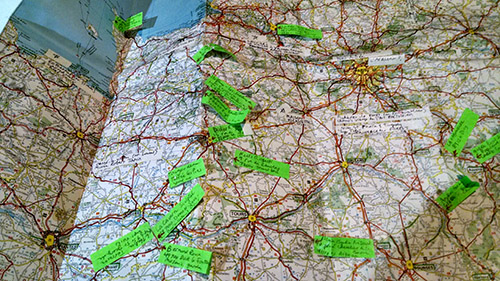
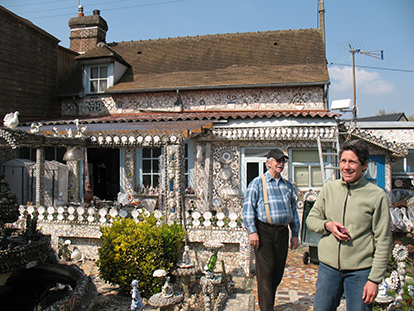
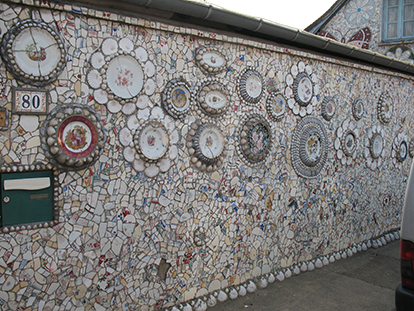
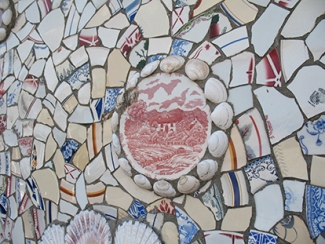
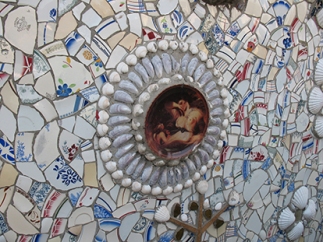
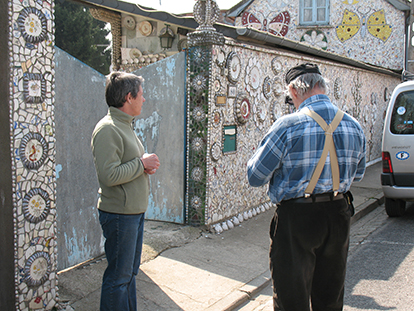
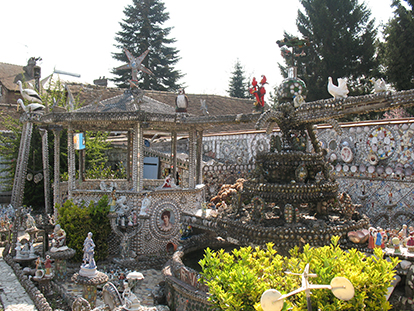
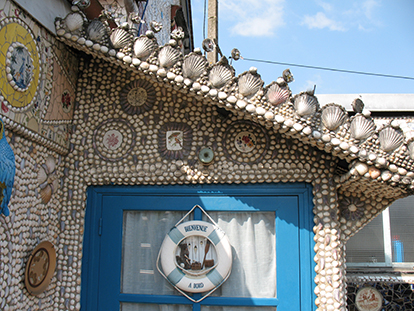
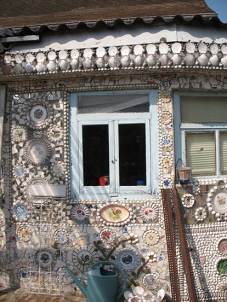
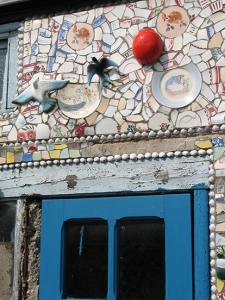
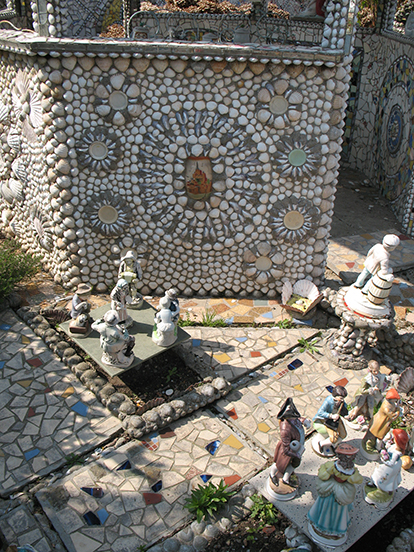
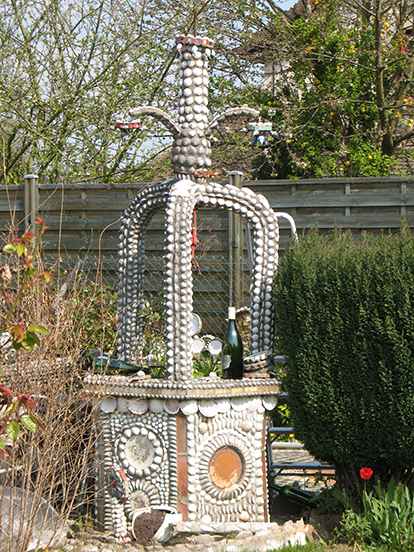
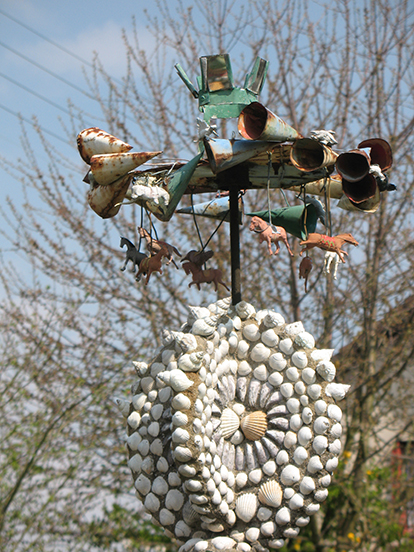
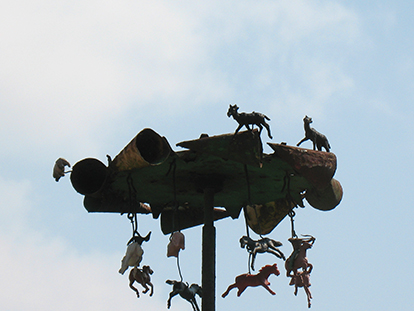
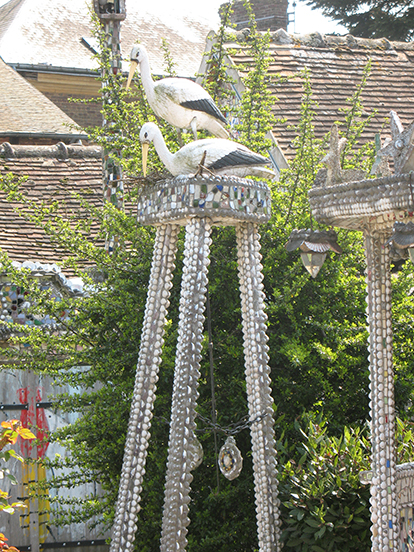

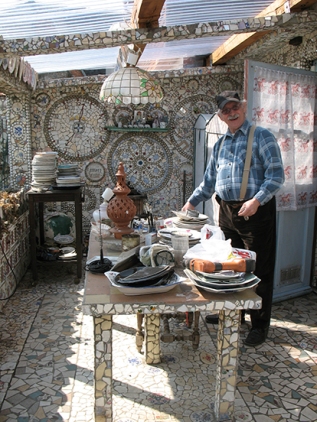
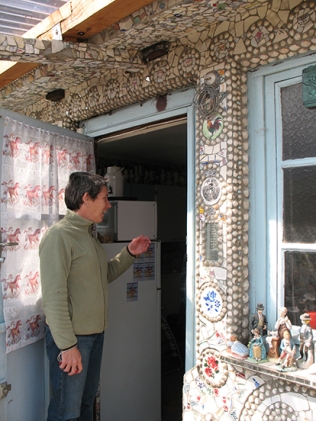
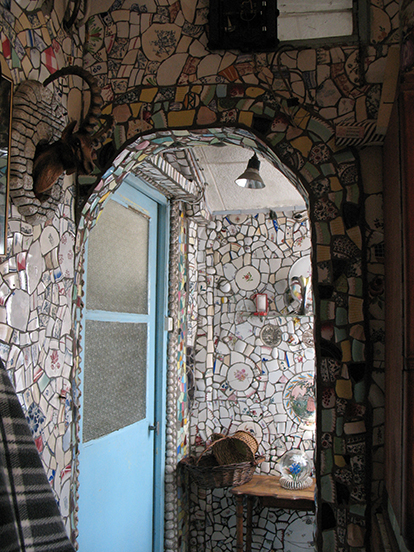
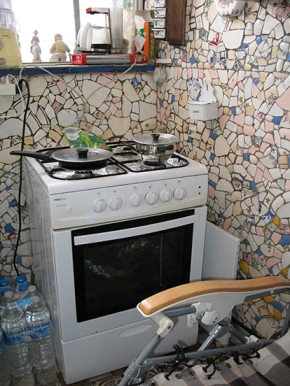
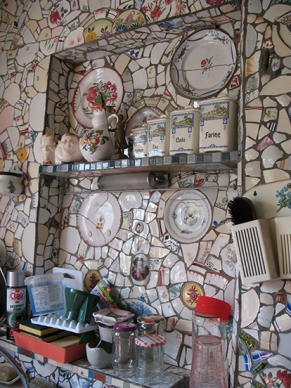
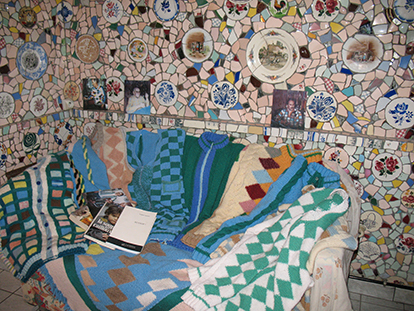
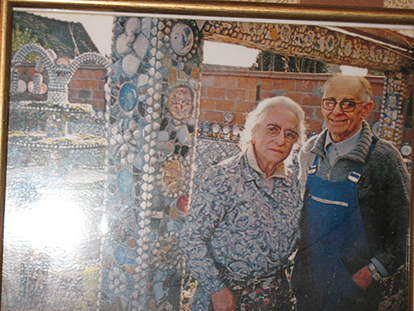
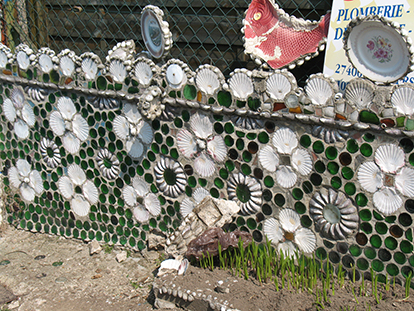
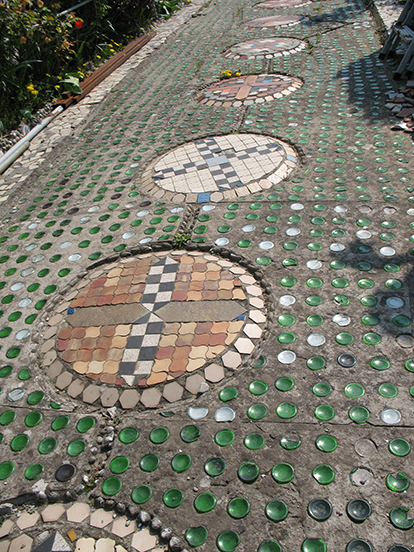
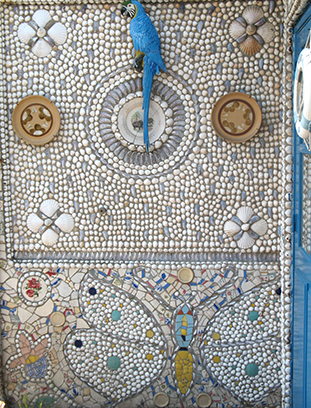

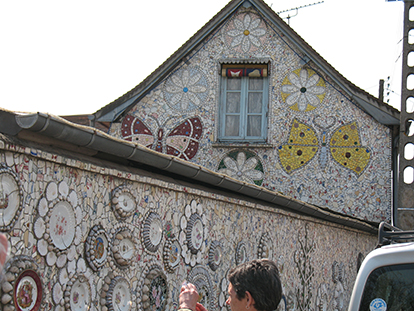
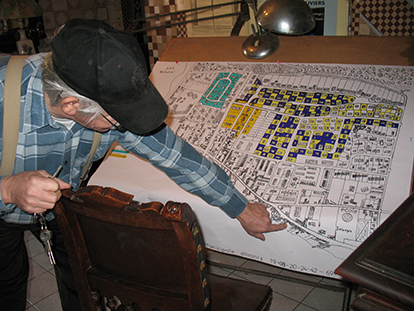
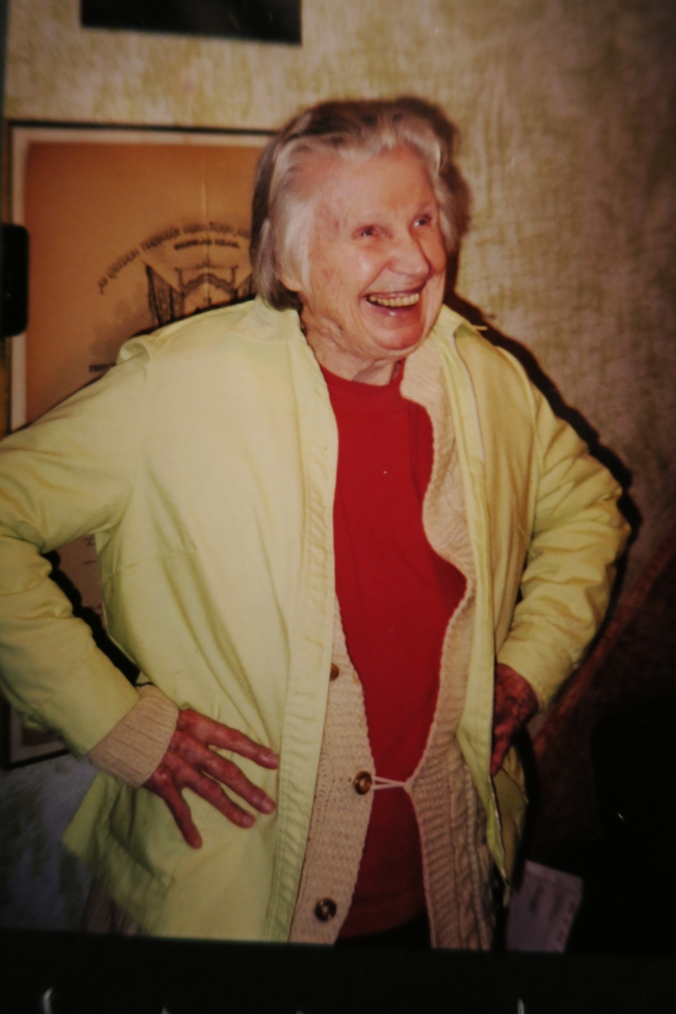
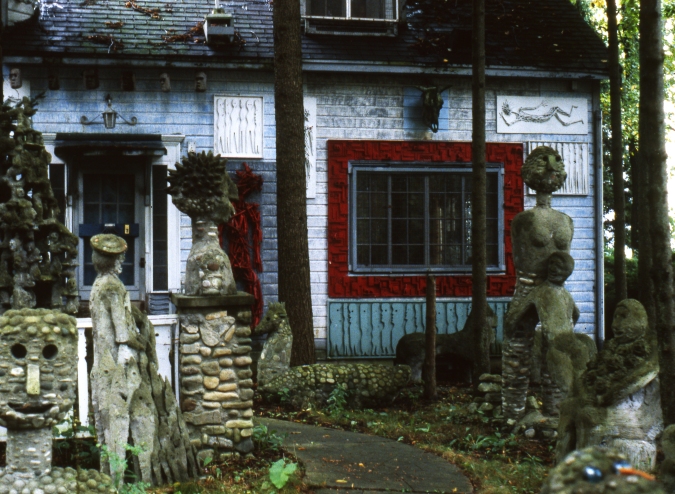



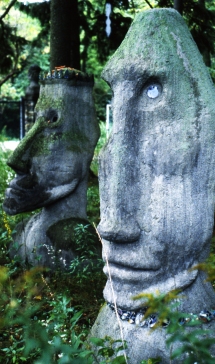
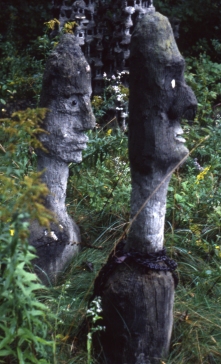
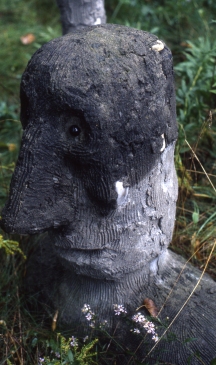
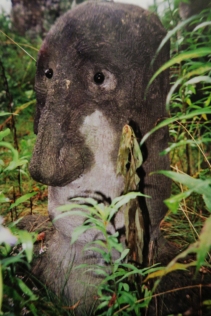
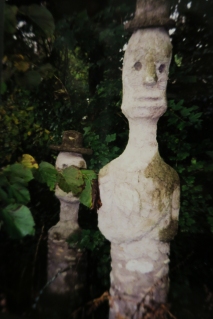
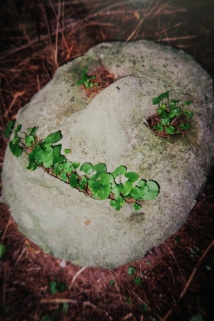
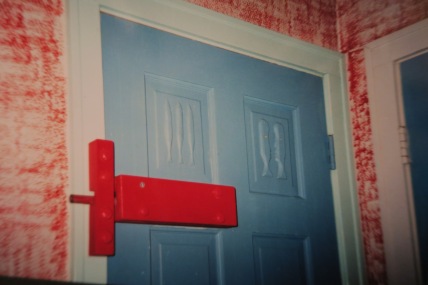


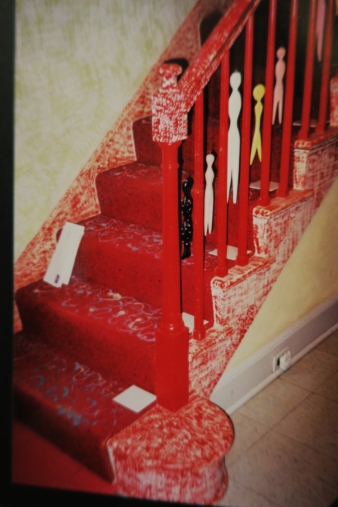

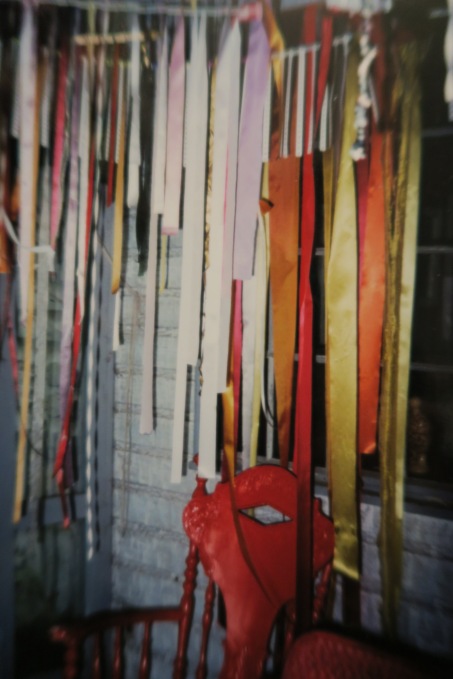













 to the point where you really can’t figure out what the relationship to the holidays is anymore. Darth Vader??? Uh oh, spoiler alert, maybe you should scroll really fast past this next image:
to the point where you really can’t figure out what the relationship to the holidays is anymore. Darth Vader??? Uh oh, spoiler alert, maybe you should scroll really fast past this next image:




























 T
T










